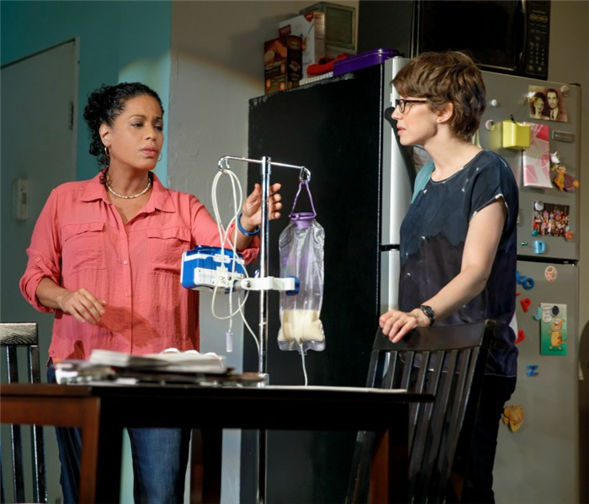Translate Page

Mary Jane reunites an Obie-winning director with her favorite set designer
---
Laura Jellinek was working as a model maker in set designer Mimi Lien's studio when she first met Anne Kauffman, a celebrated theatre director who had already staged productions for Lincoln Center Theater and New York Theatre Workshop. The artists connected and became fans of each other's work. Then in 2014 they graduated from admirers to collaborators when Kauffman asked Jellinek to design the set for Your Mother's Copy of the Kama Sutra at Playwrights Horizons. Over the next three years they worked together half a dozen times, and even made their Broadway debuts simultaneously this past summer with Marvin's Room. Now they're working together again on Mary Jane, Amy Herzog's moving drama about a mother and her chronically ill child, currently in previews at New York Theatre Workshop.
"We like to hang out together," says Jellinek, who's 34, about her creative partnership with Kauffman, who is about a decade older. "And at every step of the process I feel like I'm a full participant. So if I think the costume is weird, it makes total sense for me to say that or to say something about staging. It's a full collaboration and I'm not just doing the set."
Kauffman values their interplay, too. "Any good designer is a great dramaturg," she says. "I consistently go back to Laura because I know that she is going to be rigorous and pull me back from my bad habits or things I get seduced by. She's very good at slapping me on the wrist and saying, 'No, there's a simpler way of doing things.'"
Mary Jane, which premiered at Yale Repertory Theatre last spring, presented Kauffman and Jellinek with some challenges. It focuses on the title character, whose three-year-old son is so severely disabled that he can't speak or move on his own. Unable to cope, the boy's father has abandoned the family, leaving them to shuttle between their shabby apartment and the hospital that has become their second home.
Kauffman knew she wanted their dumpy abode to reflect the everyday realism Herzog typically uses to ground her plays. With its saggy couch and makeshift dining table, Jellinek's vision for the apartment -- informed by looking at scores of photos of Craigslist rentals -- should seem familiar to anyone who has struggled to live on a limited budget. The bulky wheelchair in the hall and other medical paraphernalia pay silent testimony to the family's particular situation.
But the second act proved more problematic. For the Yale production, Jellinek took an abstract approach, placing Alex's hospital bed in the middle of a black void, defined by a curved tile wall. "I knew it was beautiful," says Jellinek. "But it didn't work."
After a series of meetings, Jellinek, Kauffman, and the playwright decided to make the hospital more naturalistic. To underscore that the apartment and the pediatric ward are flip sides of Mary Jane's existence, the intermission was removed so the transformation between the two locales happens in full view of the audience. Those who witnessed the breathtaking, in-front-of-your-eyes set change in last season's A Life, another Jellinek-Kauffman project, know the design magic they're capable of.
"The way that it moves is directly related to the way the play feels -- it's an emotional adjustment," says Kauffman, who has already tapped Jellinek for their seventh collaboration, Signature Theatre's upcoming revival of Stephen Adly Guirgis' Our Lady of 121st Street.
In the meantime, the new Mary Jane set may lack the wow factor of its predecessor, and Jellinek admits it took a lot of trial and error to work out the choreography for the spinning walls, but she's pleased with the result. "It needs to be about the play," Jellinek says. "Not about the set."
Janice C. Simpson writes the blog Broadway & Me.
Top image: Liza Colón-Zayas and Carrie Coon in Mary Jane. Photos by Joan Marcus.
TDF MEMBERS: Go here to browse our latest discounts for dance, theatre, and concerts.